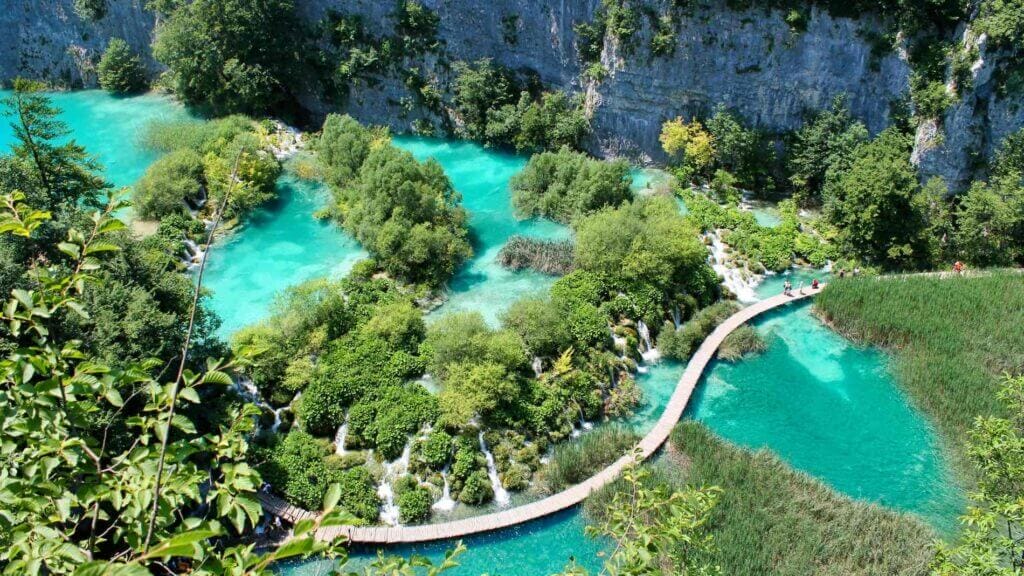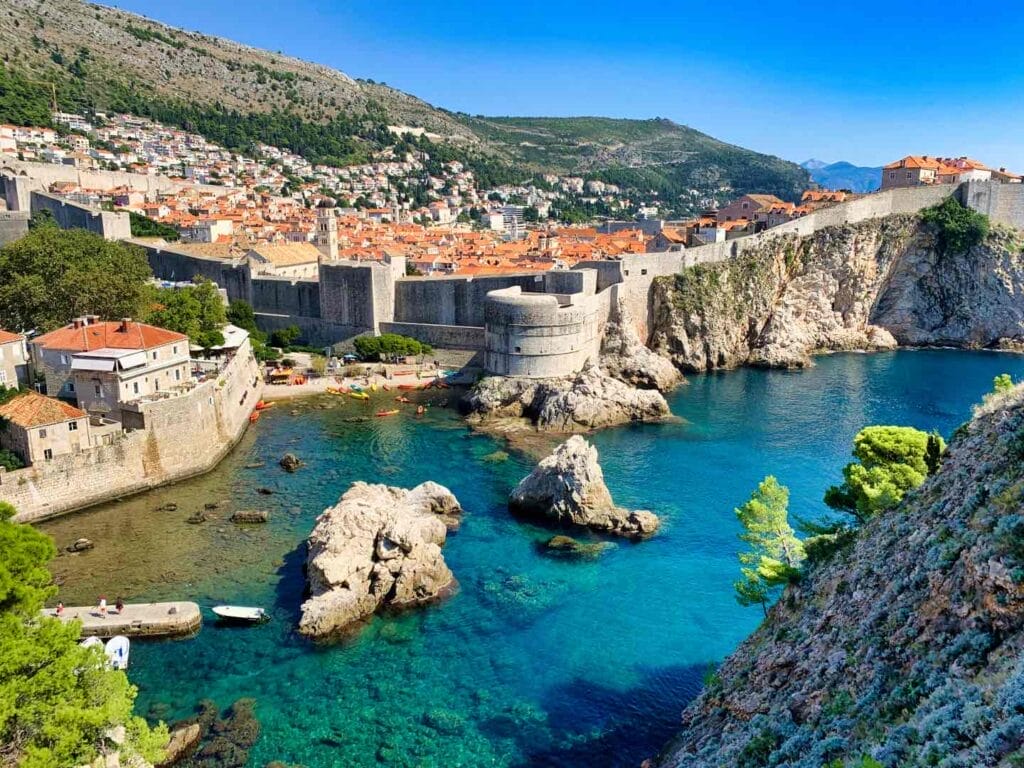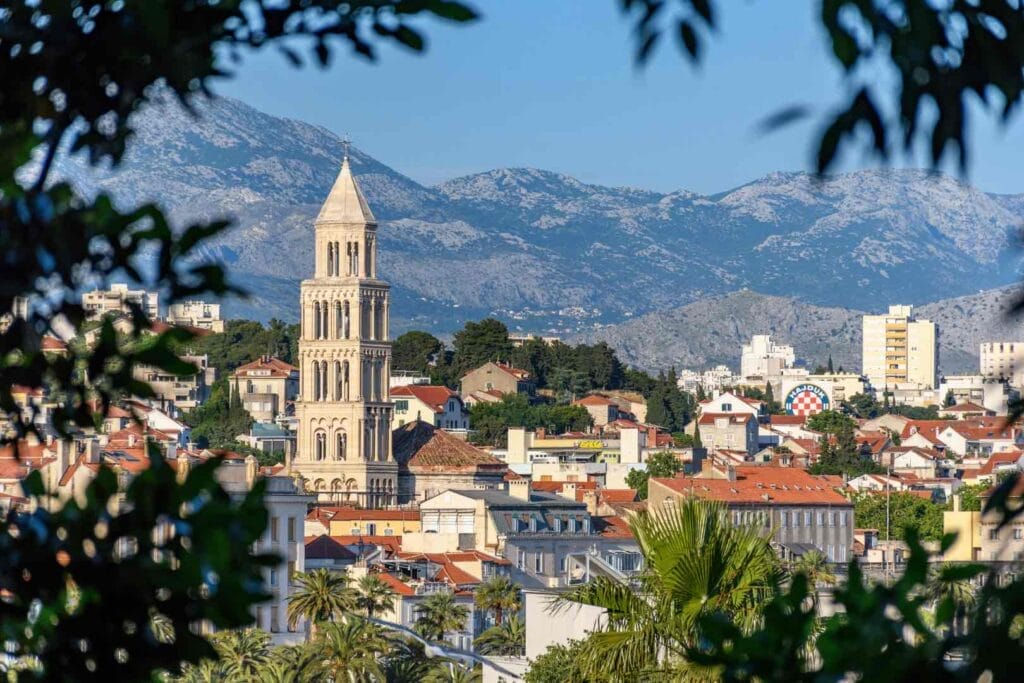Table of Contents
ToggleFrom my experience, Croatia is a destination that truly shines all year round. It doesn’t matter if you’re dreaming of sun-soaked beaches, exploring ancient ruins, or immersing yourself in cultural festivals, there’s always something magical happening in this captivating country. So, grab your sunhat or your winter coat, and let’s dive into the best times to visit Croatia for an unforgettable adventure! 🇭🇷

5 Key Takeaways: The Best Time to Visit Croatia
- Shoulder Seasons (April-May, September-October): Ideal for pleasant weather, fewer crowds, and reasonable prices.
- Summer (June-August): Perfect for beach lovers, island hopping, and vibrant festivals.
- Winter (November-March): Offers a quieter atmosphere, festive celebrations, and cultural events.
- Consider your interests: Choose the season that aligns with your preferred activities and budget.
- Plan ahead: Research public holidays and events that may impact your travel plans.
Why Croatia?
Croatia, a jewel on the Adriatic Sea, boasts a captivating blend of history, culture, and natural beauty. From the Roman ruins of Split to the medieval walls of Dubrovnik, and the turquoise waters of Hvar to the cascading waterfalls of Plitvice Lakes National Park, Croatia offers a diverse tapestry of experiences that cater to every traveller’s taste, but with such an array of choices, knowing when to go can make all the difference in ensuring a perfect Croatian escape!
Factors to Consider When Planning Your Trip

Before we show you our month-by-month weather guide for Croatia, let’s consider a few key factors that will influence your decision on the best time to visit Croatia:
- Weather: Croatia experiences a Mediterranean climate, with hot summers and mild winters. If you’re a sun-seeker, the summer months are your best bet. However, shoulder seasons (spring and autumn) offer pleasant temperatures and fewer crowds.
- Activities: Are you envisioning lazy days on the beach, exploring historical sites, or hiking in the national parks? Each season offers unique activities, so align your interests with the time of year.
- Budget: Peak season (June-August) generally comes with higher prices for accommodation and flights. If you’re on a budget, shoulder seasons or even winter can be more affordable options.
- Crowds: If you prefer a more tranquil experience, avoid the peak season, when Croatia is flooded with tourists. Spring and autumn offer a more relaxed atmosphere.
Here are the Best Times to Travel to Croatia!
Croatia’s allure extends throughout the year, with each season offering its own unique charm. Let’s delve into the nuances of each month to determine the ideal time for your Croatian adventure.

Here are the Best Times to Travel to Germany!
Shoulder Seasons vs. Peak Season
Croatia’s shoulder seasons (April-May and September-October) are often considered the sweet spot for travel. The weather is pleasant, the crowds are thinner, and prices are more reasonable. However, the peak season (June-August) is undeniably popular for a reason – the sun is shining, the beaches are buzzing, and the festival scene is in full swing.
Crowd Levels and Costs
Crowd levels and costs fluctuate significantly depending on the season. Peak season sees a surge in tourists, leading to higher prices for accommodation, flights, and activities. If you’re on a budget or prefer a quieter atmosphere, consider travelling during the shoulder seasons or even the winter months.
Related article: 3 Days in Dubrovnik: Sun, Walls, and Game of Thrones
April to May

Springtime in Croatia is a glorious affair, with temperatures warming up, flowers blooming, and the landscape bursting with colour. This is a fantastic time to visit if you enjoy outdoor activities like hiking, cycling, and kayaking.
Weather and Climate: Croatia spring weather
In April, the average temperature hovers around 15°C, while May brings warmer days averaging 20°C. Rainfall is moderate, but be prepared for occasional showers.
Festivals and Events: Croatia spring festivals
Spring in Croatia is marked by various cultural and religious festivals, including Easter celebrations and the Feast of St. Duje in Split.
Activities and Attractions: Things to do in Croatia in spring
Spring is a wonderful time to explore Croatia’s national parks, like Plitvice Lakes and Krka, without the summer crowds. You can also enjoy wine tasting in Istria, island hopping in the Adriatic, or simply strolling through the charming towns and villages.
For your viewing: 5 Reasons Why Croatia Is One Of Europe’s Most Desirable Destinations Right Now
June to August

Summer in Croatia is synonymous with sun, sea, and sand. The beaches are packed, the islands come alive, and the nightlife is electrifying. If you’re a beach bum or a party animal, this is your time to shine.
Weather and Climate: Croatia Summer Weather
Summer brings hot and sunny days, with temperatures often exceeding 30°C. The sea is warm and inviting, perfect for swimming, snorkelling, and diving.
Festivals and Events: Croatia Summer Festivals
Croatia’s summer calendar is jam-packed with festivals, from the Dubrovnik Summer Festival, a renowned cultural event, to the Ultra Europe music festival in Split.
Activities and Attractions: Things to do in Croatia in Summer
Summer is ideal for sailing around the islands, exploring the underwater world, or simply soaking up the sun on the beaches. You can also enjoy open-air concerts, alfresco dining, and vibrant nightlife.
Subscribe to Northern Wanderers
September to October
Ah, autumn in Croatia, my absolute favourite! The summer crowds begin to dissipate, the temperatures become more comfortable, and the landscape transforms into a canvas of warm hues. This is a fantastic time for outdoor enthusiasts and those seeking a more relaxed pace.
Weather and Climate: Croatia autumn weather
September still boasts warm and sunny days, with average temperatures around 25°C. October brings a gradual cooling, with temperatures averaging 18°C. Rainfall is slightly higher than in summer, but it rarely dampens the autumnal charm.
Festivals and Events: Croatia autumn festivals
Autumn in Croatia is a time for harvest festivals and cultural celebrations. The Zagreb Film Festival, the Outlook Origins Festival in Pula, and the truffle hunting season in Istria are just a few of the highlights.
Activities and Attractions: Things to do in Croatia in autumn
Autumn is perfect for hiking, cycling, and exploring the national parks without the summer heat. You can also enjoy wine tours in Istria and Dalmatia, indulge in truffle delicacies, or simply wander through the picturesque towns adorned with autumn foliage.
Similar article: Experience Zagreb: Croatia’s Vibrant Capital City
November to March

Winter in Croatia offers a different kind of magic. While the coastal areas might be quieter, the cities come alive with Christmas markets, festive lights, and cultural events. If you’re seeking a cosy and cultural experience, winter might be the perfect time for you.
Weather and Climate: Croatia winter weather
Winter temperatures vary across the country, with coastal areas experiencing milder temperatures around 10°C and inland regions seeing colder weather with occasional snowfall.
Festivals and Events: Croatia winter festivals
Winter in Croatia is marked by Advent celebrations, Christmas markets in Zagreb, Dubrovnik, and Split, and the Rijeka Carnival, one of the largest carnival events in Europe.
Activities and Attractions: Things to do in Croatia in winter
Winter is a great time to visit museums and art galleries, enjoy thermal baths, or indulge in hearty Croatian cuisine. You can also ski in the Gorski Kotar region or explore the charming towns adorned with festive decorations.
Similar articles: Croatia’s Top Historic Sites: A Journey Through Time
Public Holidays in Croatia

Croatia celebrates a variety of public holidays throughout the year, which can impact travel plans. Some major holidays include:
- New Year’s Day (1st January)
- Easter Monday (varies)
- Labour Day (1st May)
- Corpus Christi (varies)
- Statehood Day (25th June)
- Victory and Homeland Thanksgiving Day and the Day of Croatian Defenders (5th August)
- Assumption Day (15th August)
- Independence Day (8th October)
- All Saints’ Day (1st November)
- Christmas Day (25th December)
- St. Stephen’s Day (26th December)
Impact on Travel
During public holidays, some businesses and attractions may be closed or have reduced hours. Transportation schedules may also be affected. It’s advisable to check in advance and plan accordingly.
You might also be interested: Croatia’s Romantic Hideaways: Your Love Story Begins Here!
Recommended Tours in Croatia
FAQs: The Best Time to Visit Croatia
When is the cheapest time to visit Croatia?
From my experience, the cheapest time to visit Croatia is during the winter months (November to March), excluding the holiday season. Accommodation, flights, and activities are generally more affordable during this period. However, keep in mind that some businesses and attractions may have reduced hours or be closed.
What is the best time to visit Croatia for beaches?
If you’re a beach enthusiast, the best time to visit Croatia for sun-soaked days and warm waters is during the summer months (June to August). The islands are bustling with activity, and the beaches are perfect for swimming, snorkelling, and water sports.
When is the best time for hiking in Croatia?
The best time for hiking in Croatia is during the shoulder seasons (April to May and September to October). The weather is pleasant, and the trails are less crowded than in the summer. The spring months offer blooming wildflowers, while autumn showcases stunning foliage.
Are there any months to avoid visiting Croatia?
While Croatia has something to offer year-round, the shoulder seasons are generally considered the most ideal times to visit due to pleasant weather, fewer crowds, and reasonable prices. However, if you’re seeking a vibrant beach scene, winter might not be the best time.
What should I pack for a trip to Croatia?
Packing for Croatia depends on the season and your planned activities. Generally, pack lightweight and breathable clothing for summer, layers for spring and autumn, and warm clothes, including a waterproof jacket, for winter. Don’t forget essentials like sunscreen, sunglasses, a hat, comfortable shoes, and a swimsuit if you plan on hitting the beach.
Final Thoughts: Your Croatian Adventure Awaits
Croatia’s diverse landscape, rich history, and vibrant culture make it an enticing destination throughout the year. Whether you are drawn to the sun-drenched beaches of summer, the colourful festivals of spring and autumn, or the cosy charm of winter, Croatia has something to offer every traveller.
By considering your preferences and the information in this guide, you can choose the perfect time to go on your Croatian adventure. Remember, the best time to visit Croatia is whenever your heart desires. So, what are you waiting for? Start planning your trip and get ready to experience the magic of this captivating country!
Have you been to Croatia? When did you go, and what were your favourite experiences? Share your stories and tips in the comments below! We’d love to hear from you.
Related articles: Top 10 Places to Visit in Croatia for First-Time Travellers
Recommended websites and sources:
Croatia Travel Guides
Save this post (pin it)
Share this post
Related Articles
Note: This post contains affiliate links. When you make a purchase using one of these affiliate links, we get paid a small commission at no extra cost to you.

